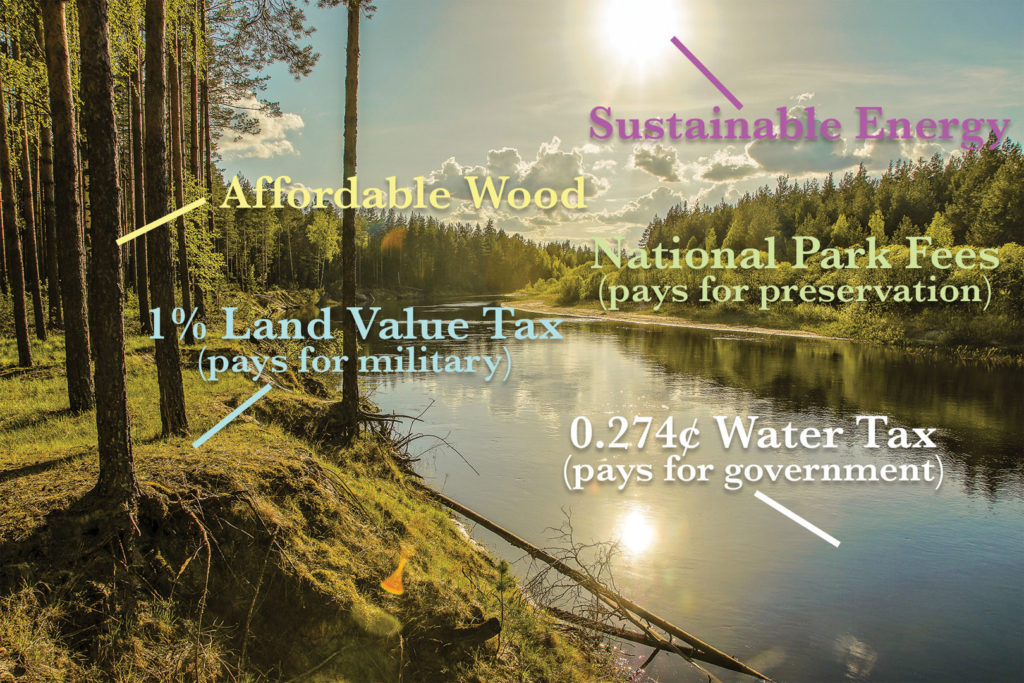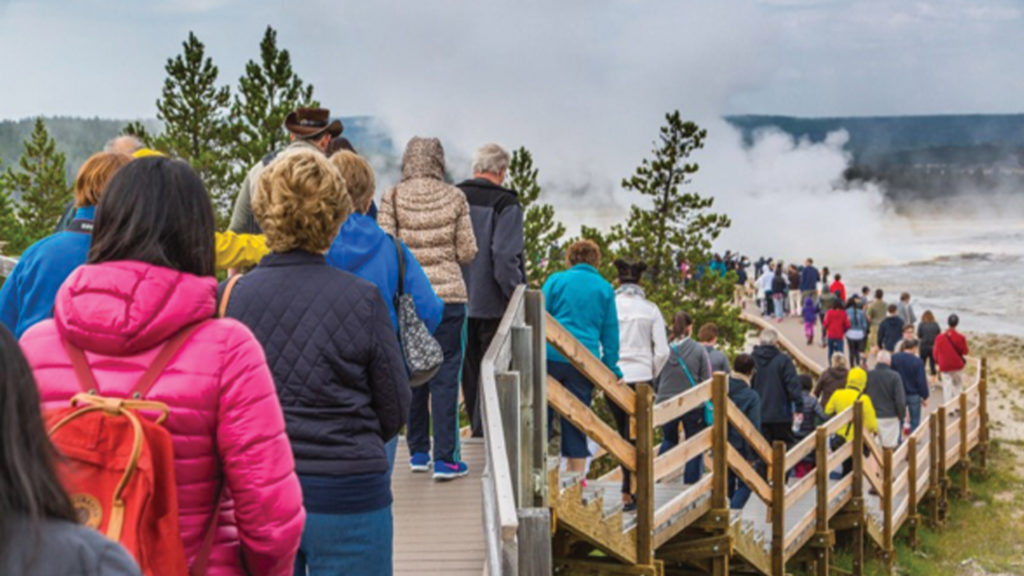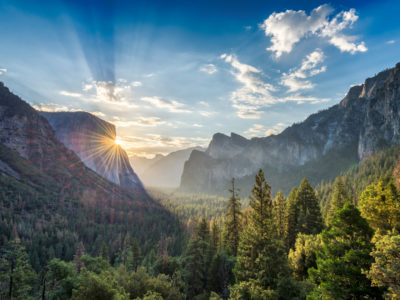Fully Utilizing Nature
In the sustainable eco-nomics of planet earth, nothing is wasted; whatever one process discards, another will utilize to its advantage; the earth, through endless trial and error, has utilized the physics of this reality to carve out a space for itself; through biomimicry, people need to find out what the earth knows, and derive applications that will put us in a more commensal relationship with our host.
All human-made products need to be easily recyclable. Our drive to make a profit necessitates aesthetic considerations, but is wasteful and unsustainable, and threatens to use up minerals that someday may be invaluable in currently unforeseen ways. On the list:
- All construction materials: steel, aluminum, lumber, cement, plastic, paper, mineral resources, etc.
- Vehicles
- Consumer goods
- Packaging
Government has a role in societal management, and to that end, it needs to oversee this important process. Before it can step into this role with any credibility, however, it will need to handle its own un-sustainable nature. In order to eliminate ‘Government waste’, it will need to clean up the negative externalities of Taxation and National Debt, and run on some smaller sustainable amount of financial fuel. The National Bank gets us 90% of the way there. Here are some other ideas to get us all the way there.
Better Utilization of Federal Lands
What is the point of having countries if the people are unable to utilize the valuable resources within its boundaries? Federal lands are filled with what should be free timber, aggregate, oil, coal, natural gas, land to place wind turbines and solar panels, land for grazing and farming, ‘airwaves’ for communication; the combination of ‘property rights’, and the designation of capital in order to procure said ‘property rights’, has created quite a dilemma for government’s attempt to run a Democracy.
Government Strategies to Become Sustainable

Forget ‘Taxation’, Instead Charge ‘Rent’
The worst negative externality created by claiming Property Rights is all the guns and military needed to defend this particular ‘right.’ Note to Ourselves: it isn’t really a ‘right’ if you have to kill other people in order to obtain it. If ‘rights’ are instead—as Paul Collier suggests—‘reciprocal obligations’ we confer upon each other, then the only way we would all agree to a property ‘right’ is if each of us received some equal measure of said property; this would imply that the property was not ‘man-made’, but natural property.
Since the desire to have land necessitates a military, the people who claim ownership of the land should pay for the military. The current reasoning is faulty, but could be corrected if we agree that, in truth, We the People—through the entity of ‘government’—own the land, and government is therefore charged to protect it. The way to collect money in order to keep and army would be to charge ‘rent’ on the land it has apportioned to its citizens. Utilizing Henry George’s ‘Land Value Tax’, we could charge each person or family 1% of the value of the land they occupy, in order to pay for the military to protect it. What makes this fair is that this ‘rent’ could even be applied on top of the apartment ‘rent’, the business leases, the hotel room or trailer park — wherever people plop themselves down. We could even charge these transient types in their mobile homes, if they ever hope to drive or park on our streets anymore, that is.
Another essential need —water— is something everyone will use; therefore, a small ‘rental’ fee of 0.274 cents per gallon could be applied, and raise an easy $167 Billion. In the Third Option plan, this would completely pay for all necessary federal government management (and most of local government as well).
To recap so far:
The National Bank would cover the current Social Security and Medicare / Medical costs, plus all the ‘essential needs’ Departments within federal government. The 1% Land Value ‘Rental’ would cover our Military forces, and 0.274 cent / gallon water ‘Rental’ would pay all Federal and Local Government Management / Administration costs. The only other major expense is our National Debt, which could be slowly filtered into our National Bank whenever annual Bank loans slow down in a given year; this would turn debt into credit and further increase our ‘retirement dividends’.
Another chunk of money separate from income is the money transferred between generations, as people pass away, and leave wealth to their progeny. This unearned wealth transfer is essentially equivalent to earned ‘income’ for the lucky recipient, and thus should incur the same ‘income investment’ assessment of 10% off the top, once this capital is ‘gained’. (The wealthy could not argue that this income enhancement is somehow different because it is unearned, as most wealth is similarly unearned).
This money could be used for National Debt, or toward Education, or simply put into the Bank, but either way, Federal Government is in need of it, and it is less likely that people, once they are dead, would argue much about the concept of capital redistribution. If people enjoy their money while they are alive, it is better for the economy anyway; hoarding the money is not healthy even for the eventual recipient. The next generation would have little to complain about, having received 90% of their parent’s wealth without having labored in any way to obtain it. It should be a win / win / win, in a rational world.
Maximizing Federal Lands
When entrepreneurs remove minerals from off of federal lands, this goes to Land Value, and some fee would be assessed for the extraction of it. Meanwhile, government’s mandate to build housing, transportation, and other infrastructure necessary to secure equal rights suggests they should freely utilize the natural resources sitting on their public property, in order to make these ventures less costly.
The biggest missed opportunity, however, is the chance to make a few bucks modeling America’s natural beauty, as exhibited by our National Parks.
National Parks & Monuments Tourist Business
The goal: renovate our National Parks in order to make them excellent tourist destinations, with all the essential amenities and accommodations, and charge just enough to pay back the Bank Loan needed to pull off these upgrades. Our business model needs to combine tourists getting close to nature while still protecting and respecting it.

BACKGROUND:
- National Park Visitation generates $32 billion for our economy each year, yet only around $282 Million is coming back to help pay the $12.6 Billion in expenses to maintain it. Meanwhile, National Parks need an alleged $12 Billion in further infrastructure upgrades.
PLAN:
- The Interior of the United States is collectively owned by the People. We will take out a $24 Billion National Treasures Infrastructure Loan, then build all of our own lodging, restaurants, and other amenities (like walking and biking paths, which are environmentally smart, as they keep people out of the more delicate natural habitats and ecosystems). Through these services we will need to collect $1.375 Billion a year to pay off the Bank Loan. Meanwhile, we will charge rent to private vendors already profiting off of these regions.
- With the direction of conservationists and extraction Teams, the People will procure what we need for our Federal Businesses, and supervise (and charge rent for) the extraction of raw materials and resources desired by the private sector.
- Funded by our $25 Environmental Protection Tax, the Environmental Protection Agency (EPA) will be hired as the watchdog for the United States Interior. Through investigation, prosecution, and fining of both the public and private sector, it is possible the entire Department of the Interior can pay for itself.
- We will bring the National Oceanic and Atmospheric Administration (NOAA) into this Department. In order to pay for it, we will start Sustainable Fishing Companies, Ocean Energy Enterprises, Educational Ocean Tours, or any other money- making or basic needs ventures which the NOAA can monitor while they continue research and oversight of our valuable Marine ecosystem.
STRUCTURE:
- One EXECUTIVE TEAM in Washington DC (Secretary + Staff) = $5 Million
- [Cost is greater to include all relevant voices]
- 50 INTERIOR MANAGEMENT TEAMS X $1.5 Million = $75 Million
- [Each State needs to oversee their specific Site4 Management TEAMS]
- 500 “SITE MANAGEMENT” TEAMS (Cost: $1.5 Million per TEAM X 500) = $750 Million
- $24 Billion National Park Infrastructure Bank Loan ($1.375 Billion yearly mortgage payment)
- National Oceanic and Atmospheric Administration (NOAA) = $4 Billion
- [This represents a 30% cut in its funding, and it will see further cuts soon, so it needs to help pay for itself ASAP. [Hint: what about a Sustainable Fishing Business?]
NOTES:
Why 500 Site Management TEAMS? [We could end up needing more]
All the following sites may need to be managed. If any are seen as unnecessary or redundant, they can be made the responsibility of other Departments or of the States. Currently on the list:
- 60 National Parks
- 130 National Monuments
- 21 National Preserves
- 52 National Historical Parks
- 88 National Historic Sites
- 29 National Memorials
- 10 National Seashores
- 9 National Lakeshores
- 15 National Rivers
- 14 National Military Parks and Cemeteries
- 12 National Battlefield Parks or Sites
- 18 National Recreation Areas
- 39 Wetlands of International Importance (Ramsar Sites)
Other Areas of Interest include:
- Ocean / offshore energy
- Minerals, including base and precious metals, energy resources
- Fish and wildlife habitats
- Water reclamation areas, like dams, reservoirs, etc.
- Designated American Indian / Alaskan Native lands
- Natural resource revenue, including forests
The new Budget for the Department of the Interior would be $4.83 Billion, but the goal is not only to cover that through tourism, but realize a profit that pays off the National Bank Loan, and leaves something to help pay for other areas of government as well.

